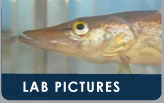Teaching
Comparative Biomechanics (BIOL 176)
I teach Comparative Biomechanics at UC Riverside. This course addresses the mechanics of solids and fluids, surface interactions, muscle mechanics, terrestrial and aquatic locomotion, feeding, ecomechanics, exercise physiology, and biomimetics.
I have also taught a 6-week class at the Bamfield Marine Sciences Centre on Vancouver Island in Canada (Summer 2010, 2012, 2014). This is be a combined lecture, lab, and field course assessing terrestrial, aerial, and aquatic movement of vertebrates and invertebrates. Students conduct independent research projects during the final 3 weeks of the course. Recent projects have examined locomotion and/or feeding in crabs, nudibranchs, barnacles, garter snakes, salamanders, and a variety of marine fishes (spiny dogfish shark, gunnels, sculpins, surfperch, and ratfish).
Functional Anatomy of the Vertebrates (BIOL 161B)
I co-teach this course (with Dr. Chris Clark) during the Winter Quarter at UC Riverside (2012-2021). This is be a combined lecture and lab course assessing the links between anatomy and function across the organ systems. Evolution is a common theme throughtout the class.
Exercise Biology (BIOL 177)
This course is an introduction to exercise biology. Integrative topics include neuromuscular function and fatigue, bioenergetics, adaptation to training, cardiorespiratory responses to acute and long-term exercise, environmental physiology, exercise capacity among disparate vertebrate groups, aging, and the comparative biomechanics of exercise. Many applications to human health and sports.
Evolutionary Physiology (EEOB 220)
This is a graduate course that I co-teach with Ted Garland at UC Riverside. In addition to the historical development of the field, we cover phylogenetic methods and current topics related to evolutionary physiology, such as neuromuscular function, biomechanics, and environmental physiology.
Biology of Fishes (BIOL 172)
This is a new class that I created at UC Riverside, and the first offering is the Fall of 2023. This course focuses on the diversity, functional morphology, ecology, physiology, and conservation of fishes from around the world. This is a combined lab and lecture course, with the lab focusing on dissections, diversity, and small experiments.
Herpetology (BIOL 170)
I teach Herpetology once per year at UC Riverside. This course combines lab exercises, field trips, and lectures. The course explores a variety of topics related to herpetology, including systematics, functional morphology, physiology, ecology, and conservation biology. Although local trips are centered around herps of the southwest, lectures explore groups from around the world.
Biology of Marine Fishes
I teach this 6-week course at the Bamfield Marine Sciences Centre on Vancouver Island in Canada (Summer 2009, 2011, 2015, 2017, 2019). This is a combined lecture and field course focusing on the evolution, ecology, functional morphology, biomechanics, physiology and conservation of fishes in the Northeast Pacific.
During the Summers of 2015 and 2017, I co-taught this course with Sean Rogers from the University of Calgary
Introduction to Organismal Biology (BIOL 5B)
At UC Riverside, I have co-taught this freshmen biology course with Lou Santiago (Fall, 2015 and Spring, 2017). We explored concepts related to invertebrate and vertebrate diversity, major differences in development and body plans, locomotion and feeding, sensory physiology, nervous system, respritation, cardiovascular function, and metabolism. Evolution is a common theme throughout the course
Functional Ecology
I taught this 3-week course at the Bamfield Marine Sciences Centre on Vancouver Island in Canada (Summer 2016). This is a combined lecture and field course focusing on physiological ecology, evolutionary biomechanics, and ecological morphology. We will explore these topics in a variety of marine and terrestrial invertebrates and vertebrates.
Comparative Physiology
I recently taught Comparative Physiology (Spring 2009, Spring 2010, Fall 2010), which also had a laboratory. This course examined several physiological systems (e.g. neuromuscular, respiratory, endocrine, sensory, and cardiovascular) in a comparative context. In the laboratory, students developed their own independent projects and focused on them for the second half of the course.
Ichthyology
At Clemson University, I taught Ichthyology (Fall 2009), which also had a laboratory. We explored the diversity of fishes in the Southeast and across the world.









